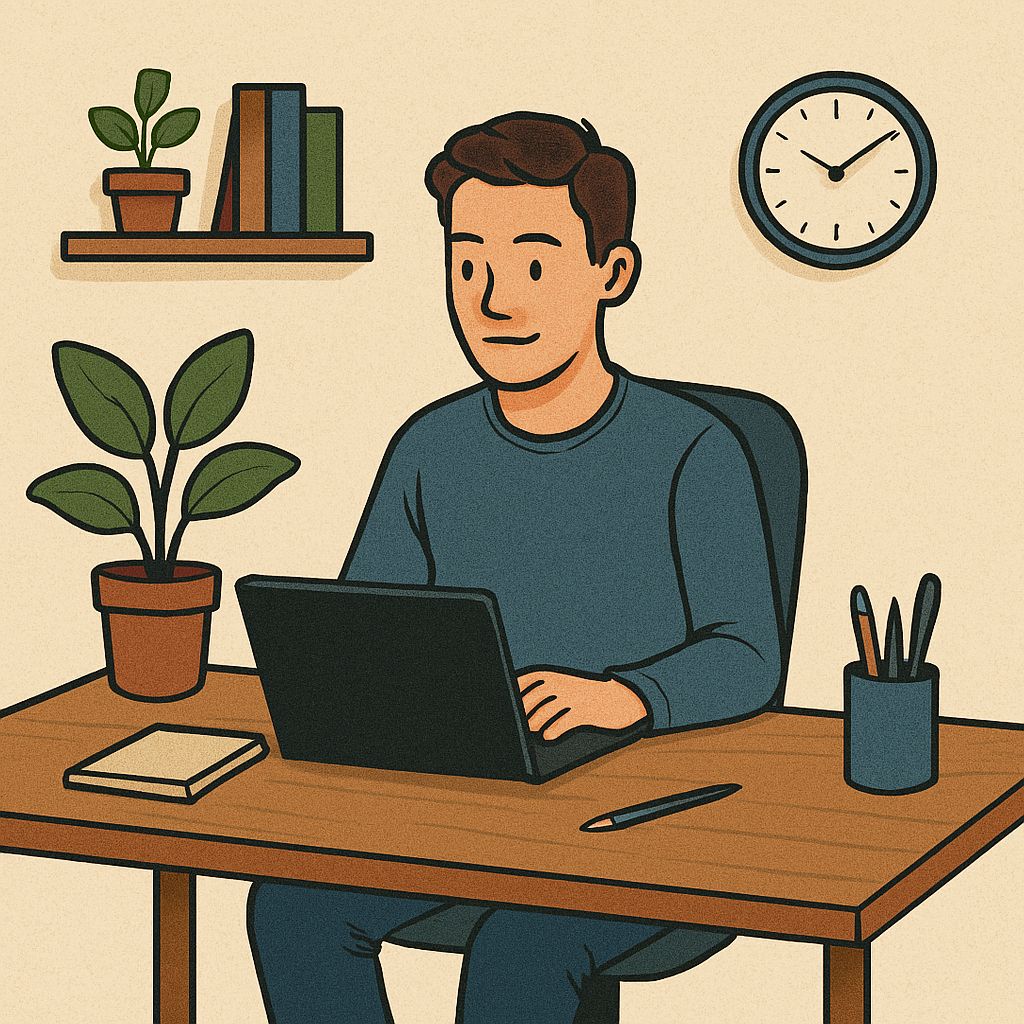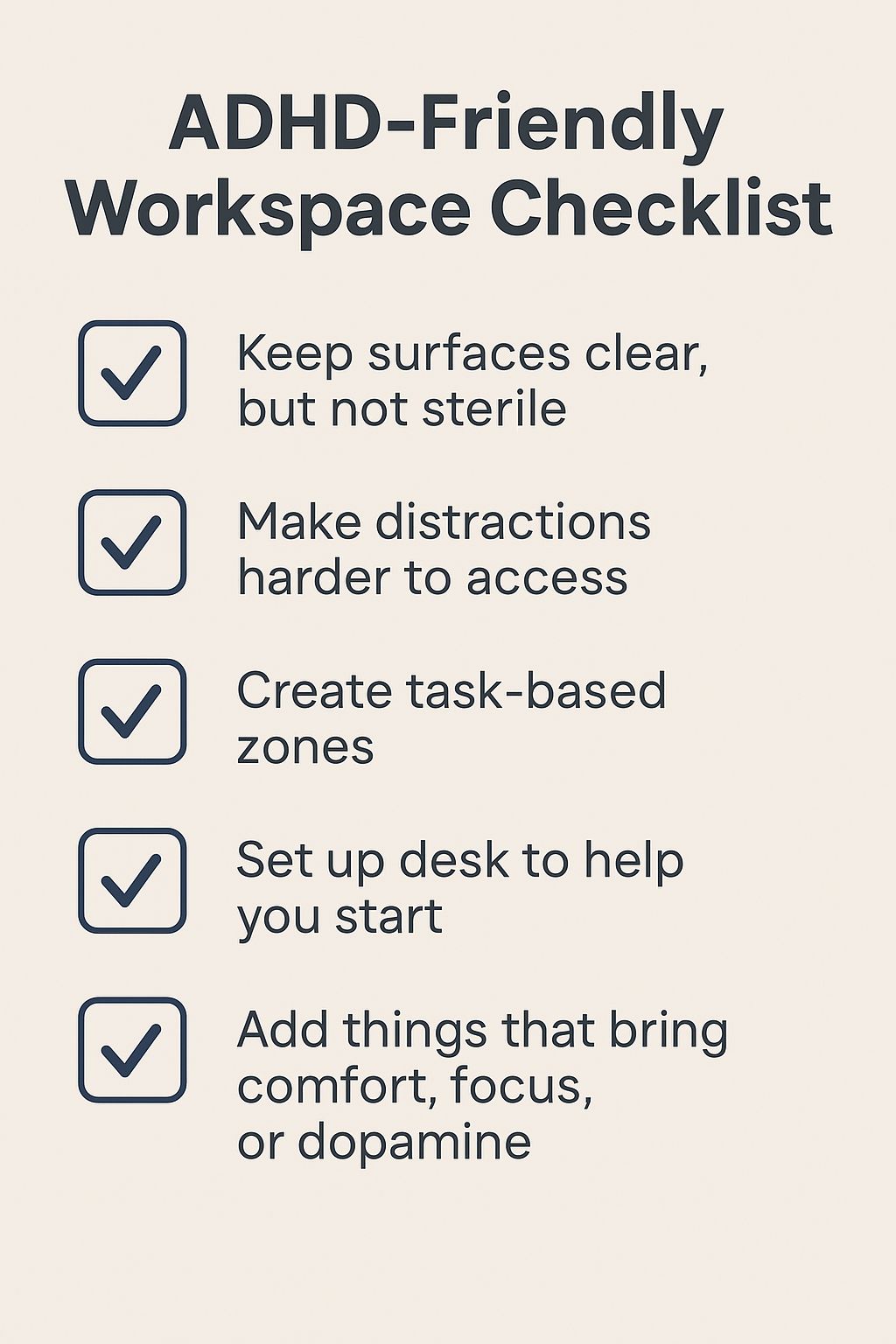- Productive ADHD Bites
- Posts
- ADHD Newsletter: How to Build an ADHD-Friendly Workspace
ADHD Newsletter: How to Build an ADHD-Friendly Workspace
Because where you work matters just as much as how you work.
Hey friend!
If you have ADHD, you already know that staying focused isn’t just about willpower—it’s about your environment. A cluttered, noisy, or boring space can derail your attention faster than you can say “Where did the last two hours go?”
That’s why your workspace isn’t just a tool—it’s your secret weapon. Today, let’s break down how to set up a workspace that helps your ADHD brain stay focused, energized, and even inspired.

ADHD Newsletter: How to Build an ADHD-Friendly Workspace
1. Keep It Simple, But Not Empty
ADHD brains are highly sensitive to visual input. Too much clutter = instant distraction. Too little = zero stimulation, zero motivation.
ADHD Workspace Sweet Spot:
Decluttered but personalized.
Keep only what you need to start on the surface.
Add 1–2 visual elements that spark joy or creativity (e.g., a photo, a plant, a fun sticky note).
Rule of thumb: If it doesn’t help you focus or feel good, it probably doesn’t need to be on your desk.
2. Make Distractions Inconvenient
It’s hard to avoid distractions if they’re sitting right in front of you. So instead of relying on willpower, set up your space to make distractions harder to reach.
Phone out of sight (even face-down isn’t enough—put it in a drawer or another room).
Turn off non-essential notifications.
Use noise-cancelling headphones or background music that helps you zone in.
Face away from windows or people if possible.
Make focus the path of least resistance.
3. Zones Work Wonders
ADHD brains love variety. Sitting in the exact same spot all day can make your focus flatline.
Try creating zones for different types of tasks:
Work Zone: Desk or table for focused tasks.
Reading Zone: Comfy chair with good lighting.
Creative Zone: Sketchpad, whiteboard, or even a wall of sticky notes.
Rest Zone: A corner with a cosy blanket or cushion where your brain can pause, not scroll.
Even tiny apartments or shared spaces can have micro-zones. A shift in physical space can = a shift in mental mode.
4. Make It Easy to Start
One of the biggest ADHD challenges? Getting started. Your workspace can help reduce that “activation energy.”
Keep your most-used tools visible & within reach (notebooks, pens, water bottle).
Have a “start-up” ritual: Light a candle, open a to-do list, play a specific song—whatever gets you in gear.
Use visual prompts—like a sticky note that says “Just open the doc” or “Start with 5 minutes.”
Sometimes the goal isn’t to “get everything done.” It’s just to get started.
5. Give Your Brain a Dopamine Boost
Your workspace should make you want to be there. That’s how you create a positive feedback loop with your brain.
Add pops of color.
Use fidget toys or textured objects for sensory regulation.
Keep a whiteboard or calendar to track your micro-wins.
A plant or soft lighting can shift the whole vibe.
Pro tip: If your workspace feels meh, you won’t want to spend time there. Build a space that makes you feel good the moment you walk in.
ADHD Workspace Quick Tips Summary
Keep surfaces clear, but not sterile.
Make distractions harder to access.
Create task-based zones.
Set up your desk to help you start, not just finish.
Add things that bring comfort, focus, or dopamine.

ADHD Newsletter: How to Build an ADHD-Friendly Workspace checklist
Final Thought
Your workspace isn’t just where you work. It’s the launchpad for your focus, energy, and creativity. ADHD brains thrive in environments that feel supportive—not chaotic or dull. So build a space that works with your brain, not against it.
You deserve a space that helps you show up as your best self—even on the days when focus is hard to find.
Now go make your workspace a little more ADHD-awesome!